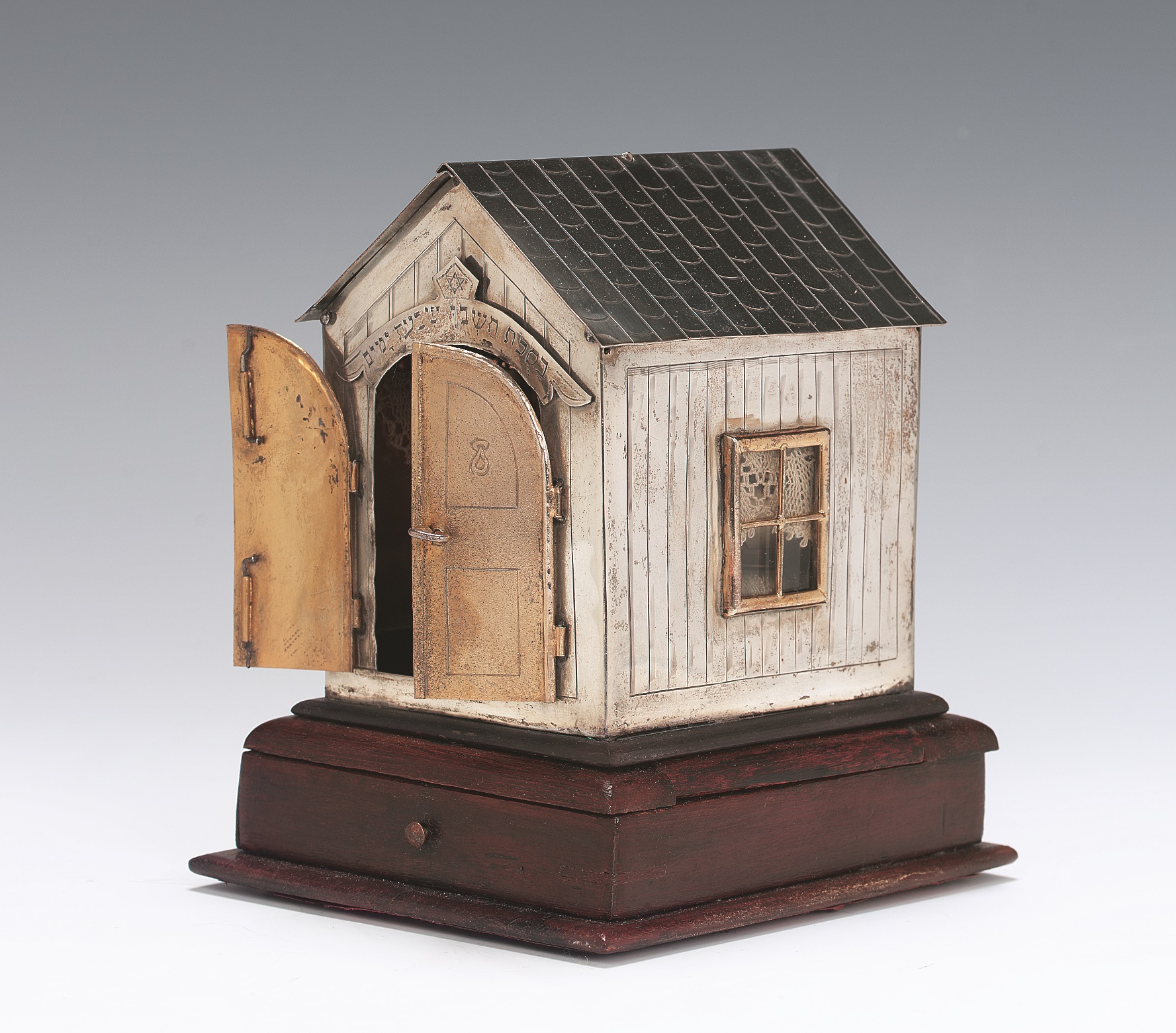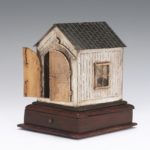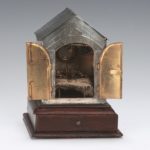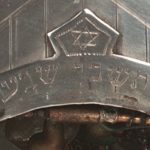Model Sukkah
- What can we see?
We can see two gold hinged doors. We can also see a bit of lace peeking out from the window on the side of the sukkah.
Look closely, what can you see?
- What do we know?
The festival of Sukkot occurs from the 15th-22nd of Tishrei, which is falls usually around September or October. It is the Jewish harvest festival and reminds Jewish people of the Israelites’ wandering in the desert for 40 years after receiving the Ten Commandments. While the Jewish people were wandering through the desert, a ‘cloud of glory’ surrounded and hovered over them leading the way and protecting them as they crossed the wilderness. During this time the Jewish people lived in temporary shelters or booths made from branches. Sukkot is the Hebrew word for ‘booths.’
Today Jewish people all over the world build sukkahs (temporary outdoor booths or huts) outside their homes to remember how God protected them and cared for them both in the wilderness and today. A sukkah must have at least three walls. There should be a temporary roof loosely covered with branches so that the stars are visible through the gaps. Once it is built, the sukkah is usually decorated with vegetation known in Hebrew as sechach. This could include hanging fruit and vegetables, branches and leaves, and garlands and flowers. It is customary to eat some or all of your meals in the sukkah during Sukkot. It is considered a mitzvah (good deed) to invite guests to share a meal in your sukkah.
This model sukkah has an inscription in Hebrew above the doors which says, ‘Sit in the Sukkah for seven days.’
- What do we wonder?
We might wonder what is inside the tiny drawer underneath the sukkah? We also might wonder how long this object took to make?
What do you wonder?
- Object File
Object name: Model Sukkah
Date: c. 1900-1939
Catalogue number: C 1999.2.70
Material(s): Silver, silver gilt
Artist: Unknown
Size: 12.5 x 8.5 x 11 cm
On display in the Jewish Museum? Yes
There are three main traditions associated with Sukkot: building a sukkah, eating in the sukkah, and waving the Lulav (loo-lav) and the Etrog (eh-trog). The Etrog is a large citrus fruit that looks similar to a lemon. The Lulav is made up of a palm leaf held between two branches of willow and three branches of myrtle. The Lulav and Etrog make up the ‘Four Species’ (four kinds of plants) used during Sukkot. They are held together and shaken every day as part of the celebration. The Lulav and the Etrog are shaken in six directions: north, south, east, west, up and down. This is to remind Jewish people that God is all around us and can be found in all directions, not just in one particular place.
The Lulav and Etrog symbolise different parts of the body and a person’s relationship with the Torah and performing mitzvot (good deeds). The willow branches (‘Aravot’) symbolise the lips. Willow has neither taste nor fragrance and symbolises a person who does not learn Torah or perform mitzvot. The myrtle branches (‘Hadassim’) symbolise the eyes. Myrtle has fragrance but no taste and symbolises a person who performs mitzvot but does not learn Torah. The palm leaf (‘Lulav’) symbolises the spine. Palm leaf has taste but no fragrance and symbolises a person who learns Torah but does not perform mitzvot. The citrus (‘Etrog’) symbolises the heart. The citrus has taste and fragrance and symbolises a person who both learns Torah and performs mitzvot.
On the last day of Sukkot a prayer is said asking God to send rain for next year’s harvest. Sukkot ends with the festival of Simchat Torah. This joyous festival celebrates finishing the yearly cycle of reading the Torah and starting all over again.



